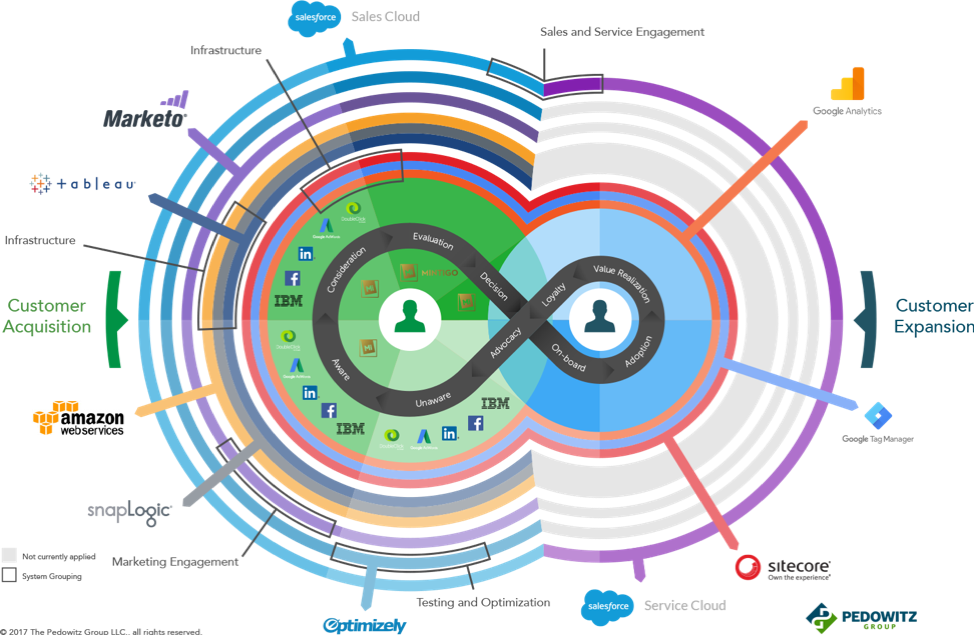 How can firms operationalize the customer experience and create customers for life? It is great to talk about it, make it a company-wide initiative, pound our fists on the boardroom table and commit to becoming customer-centric, but what are the actual steps marketing operations can take to operationalize the customer experience?
How can firms operationalize the customer experience and create customers for life? It is great to talk about it, make it a company-wide initiative, pound our fists on the boardroom table and commit to becoming customer-centric, but what are the actual steps marketing operations can take to operationalize the customer experience?
Step 1: Drive A Unified Vision Of What Great Customer Experiences You Seek To Deliver
A no-brainer, right? Start with the end in mind. But in practice you will find that different customer facing teams have wholly different views on what it takes to achieve great customer experiences. So, someone must do the internal research and reduce the results to simple customer experience vision statements that the entire company can get behind. This is not simply a marketing task. It is much bigger than that and if marketing tries to go at it alone, they will fail.
Step 2: Create Your Customer Journey Maps
By engaging with your sales teams and customers, you can learn exactly what their customer journey map is for each of your products and services. Hopefully, you can then reduce the number of unique journeys down to a handful and validate the results with clients, sales teams and channel partners.
Step 3: Define The Role Of Each Internal Group In Each Of The Journey Stages
It is especially important for the marketing, sales and customer support teams to agree who is on-point at which stage of the customer journey and what communications are taking place there.
Step 4: Modify Existing Processes To Put The Customer Journey At The Center
A great example of a process that must be changed is the sales funnel and lead management process. In many firms, this process is seller-centric, and probably ends with “closed won” or “closed lost.” That is not “customer-centric” and certainly not focused improving the customer experience. Don’t panic, you don’t have to toss it all out, you simply need to expand it to recognize that in addition to customer acquisition, you must also consider customer expansion.
Operationalizing the customer experience starts with acknowledging where your customer is in their buying journey at all times, especially after they have become a customer. By updating your CRM and MAP to track where customers are in their journey, you can adapt how you engage them with sales, marketing and support. You can then start to give your customers a better experience across all your functions.
Step 5: Adapt Reporting To Present Data From The Customer Journey Perspective
Imagine looking at your funnel based on where customers are in their buying journey. If they are not progressing along that journey as fast as you expect, you may look to the behavior of your marketers and sellers. You will also be compelled to ask what is the customer experience in this stage and what is keeping them from progressing?
Evolving your reporting to include the customer journey map will probably mean adapting your data model in CRM, MAP and CDP. The changes don’t have to be radical, but they will result in a truer picture of your customer and prospect database and the strength of your pipeline.

Step 6: Leverage Your Customer Journey Maps For Content Planning And Program Planning
Good customer journey maps represent your customers’ entire lifetime of engagement with your firm. Leveraging the same customer journey maps for content planning, program and campaign planning, and campaign reporting will be much easier for your marketing organization to accept, adopt and hold themselves accountable for getting results.
Step 7: Plan 2019 Programs Around The Customer Journey And Customer Experience
Start the program planning for 2019 with the customer, not the product, at the center. Use the customer journey map to lay out what programs, campaigns and content are needed to move prospects forward in their journey. Be sure to define what experiences you want them to have in terms of marketing interaction for each stage.
Step 8: Ensure Your Martech Stack Can Support All Stages Of The Customer Journey
Analyze your martech stack in terms of support and usage for each stage of the customer journey map. Identify areas where your technology support for a stage is weak or the existing technologies are underused. Then, put a 2019 plan in place to get the technologies and adoption to support the entire customer journey.
Step 9: Define 2019 KPIs That Are Tied To Forward Movement In Your Customer Journey Maps For Each Product Area
Better customer experiences will not just happen because the website UI is improved, or web chat is available 24/7. Better customer experiences arise from learning where the customer is in their engagement and adapting your firm’s behavior to align with their current state. The customer journey map should be the touchstone for all customer-facing organizations to optimize their customer engagement and customer experience. Follow these nine steps to deliver outstanding customer experiences and create customer advocates for the lifetime of your business.
Kevin Joyce is CMO and VP of Strategy Services for The Pedowitz Group. He is a marketing executive with 34 years of experience in high tech, in positions of engineering, marketing and sales. In the past 16 years, Joyce has worked with many companies on their revenue marketing and demand generation strategies. With a unique combination of marketing skills and sales experience, he aims to help bridge the gap between sales and marketing.







